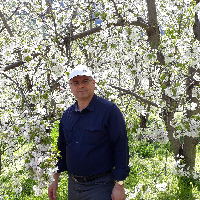The effects of physiological traits of wheat on photosynthetic water use efficiency in rainfed conditions
Author(s):
Abstract:
Water in arid and semiarid regions is a limitation factor and recognition of water use efficiency is an essential parameter in yield increment of the crop plants. An experiment with 100 wheat lines and varieties was conducted in square lattice design (10×10) to identify the effects of different physiological traits on water use efficiency of wheat under rainfed conditions. Leaf relative water content, rate of water lost, photosynthesis rate, intercellular CO2 concentration, transpiration rate, stomatal conductance and chlorophyll index were measured at flowering stage. In stepwise regression analysis of PWUE as dependent variable, photosynthesis rate, transpiration rate and intercellular CO2 concentration entered to model and explained 88% of the total variance of PWUE. Path analysis showed that photosynthesis rate had positive and transpiration rate and intercellular CO2 concentration had negative effects on this trait. According to our results, selection of plants with higher photosynthesis rate and transpiration rate and lower intercellular CO2 concentration is recommended to improve PWUE.
Keywords:
Language:
Persian
Published:
A Quarterly Journal Cereal Research, Volume:3 Issue: 2, 2014
Pages:
131 to 140
https://magiran.com/p1241293
سامانه نویسندگان
مقالات دیگری از این نویسنده (گان)
-
Evaluation of the Traits Impact Model on the Lentil Seed Yield to Determine Selection Methods
Gader Ghaffari Neamat Abad*, , Ehsan Mohseni Fard, Afshin Tavakoli Zaniani
Journal of Crop Breeding, -
Evaluation of Relationships between Stomatal Dimensions and Density with the Root System in Bread Wheat Cultivars and Lines under Rainfed Conditions
Ramin Sadegh Ghol Moghadam*, , , Mozafar Rousraii, Soheila Moradi
Journal of Crop Breeding, -
Combining ability and heterosis of spring oilseed rape genotypes under normal irrigation and drought stress conditions
Parvaneh Gholizadeh Sarcheshmeh, Hasan Amiri Oghan*, , Amir Gholizadeh
Journal of Crop Breeding,




